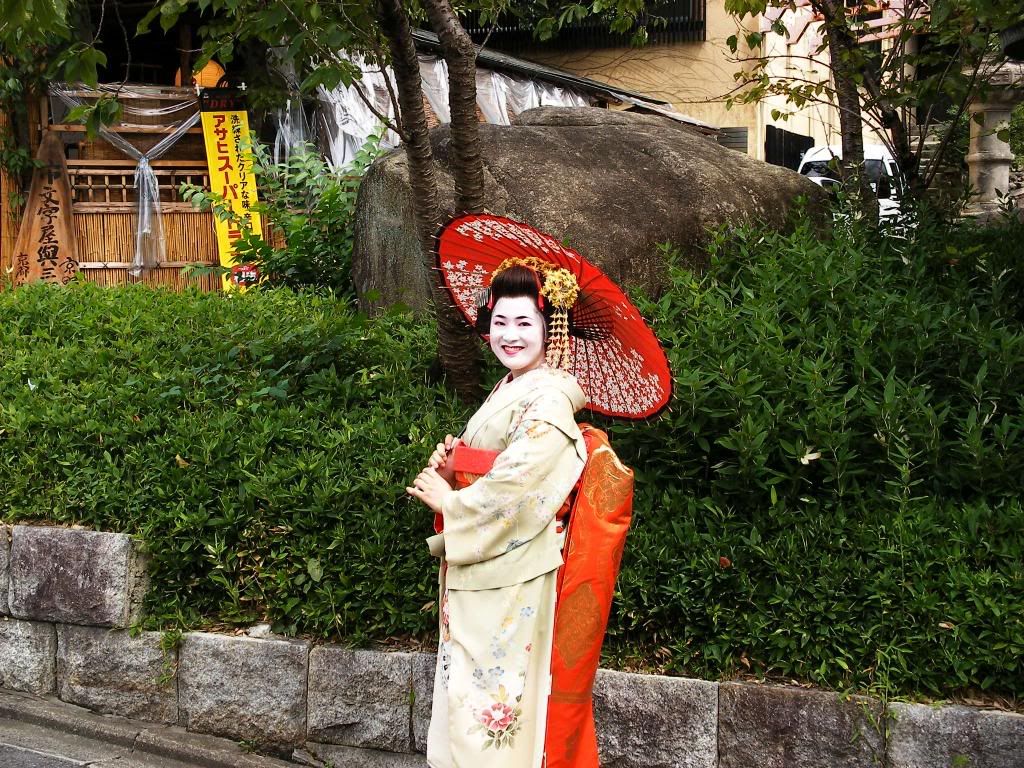
"Not me. Just the birds and the baby."
This was the reaction upon my whipping out my camera in the park near Hirakata-shi station a couple of weeks ago, followed by a slight twinge of annoyance on my part. This was not only due to my denied opportunity for a nice slice-of-life photograph but also for the man's wherewithal to dictate what I could take a picture of. Of course, as it often does, this particular interaction became a subject to ponder.
The image is presented of Japan through most people's eyes is one of a very group-oriented society where people's awareness of those groups which are inside and outside of their concept of "I" or "we" is incredibly strong. The strength of this awareness is not something I consider to be uniquely Japanese, but that is a moot point at the moment. Why it is relevant is due to the nature of anthropological, or any subject which deals with not only humans but anything within both organic and unnatural environments.
Whether intentional or not the role of the anthropologist is one of an intruder. Regardless of a formal designation as outsider or "native"/insider, the job becomes to step back and observe and catalogue the motions that compose human society. While the ideal is to traverse unnoticed, without disturbing or heavily influencing the setting being observed, in reality it is a goal far from realization.
It becomes even harder when the observer in question stands head and shoulders above a heavy percentage of the population. While holding a rather large camera. Subtlety is not on my side.

Even if that were not the case a more voyeuristic approach is, given by the above example, quite out of the question (well, not quite...). Questions of being rejected by potential subjects aside, it becomes an issue of treading on the private ground of another person even in seemingly public spaces. In the quest for the ever-elusive candid representation of Japan, permission not given is not necessarily denied, but a sly snapshot has the potential to heavily backfire in the form of wrath from the secret snapshot-ee. Oh, the horrors of the communication age.
Being that I am not a ghost slipping through crowded paths with an unnoticeable camera, I find being able to take photos of actual people without obligatory (thought not particularly unnatural and almost certainly anthropologically worthy) peace signs or otherwise not-what-is-normally-done-outside-of-a-photo difficult at best, frustrating at worst.

I was able to take this picture during a random wandering through Nanba with a friend, my curiosity piqued by the unmistakable sound of a Capoiera circle. This is a case of permission given with a hearty and perhaps slightly incredulous "Of course you can!" This is a rare case of my having been given permission to capture and capturing something I believed to be organic, despite the subpar quality of my equipment.
From here I believe my trial to one of opportunity countered by at least small attempts at propriety. As mentioned above, the title of outsider, of "gaijin" can be applied to anyone stepping outside the bounds of their normal life in order to observe. The goal is to work within the rules and constraints of my position and sift through the results to find something truly worthy of being included among those images being truly representative of this country.




